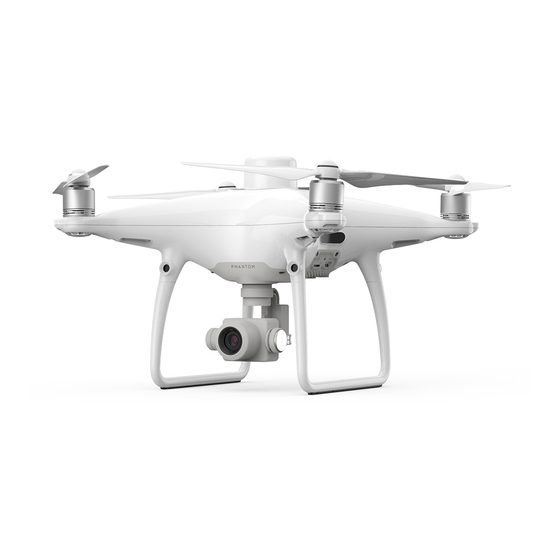
dji Phantom 4 RTK Setup Manual
Remote controller
Hide thumbs
Also See for Phantom 4 RTK:
- User manual (69 pages) ,
- Disclaimer and safety manuallines (19 pages) ,
- Frequently asked questions manual (17 pages)
Table of Contents
Advertisement
Quick Links
Phantom 4 RTK Network RTK Setup Guide
1. Insert a WB37 Intelligent battery into the Phantom 4 RTK remote controller, turn on the
remote controller by quickly press twice and then hold the power button.
2. Insert a Phantom 4 Intelligent Flight Battery into the Phantom 4 RTK aircraft and turn on
the aircraft by quickly press twice and then hold the power button located on the battery.
3. If aircraft and remote controller
are already linked, skip to step 4.
Please follow the instruction on
the right to bind the remote
controller with the Phantom 4 RTK
aircraft.
4. Connect the linked remote
controller with internet via either
Wi-Fi or 4G LTE network:
DJI Enterprise
June 2019
1
Advertisement
Table of Contents

Summary of Contents for dji Phantom 4 RTK
- Page 1 2. Insert a Phantom 4 Intelligent Flight Battery into the Phantom 4 RTK aircraft and turn on the aircraft by quickly press twice and then hold the power button located on the battery.
- Page 2 Wi-Fi network. Test procedure: Press the remote controller power button once, then press again and hold to turn the remote controller on. In the DJI GS RTK app tap and select Network Diagnostics. If the statuses of all the devices in the network chain are shown in green, the dongle and the SIM card are functioning properly. ...
- Page 3 * LTE FDD B1/2/3/4/5/7/8/12&B17/20, UMTS B1/2/4/5/8, GSM 850/900/1800/1900 supported is recommended in North America. 5. Check if both aircraft and the remote controller is running the latest official firmware. Then select “Fly” on the main screen to enter the camera view of the Phantom 4 RTK.
- Page 4 Under camera view window, tap the on the upper right corner of the screen to enter the main settings menu, and then select to enter RTK setting page. Turn on the RTK function and select “Custom network RTK” as RTK Service Type.
- Page 5 Input your NTRIP Host name, Port number, User account, Password and Mountpoint provided by the network RTK provider under RTK settings to config the Ntrip. Then tap “Connect” to proceed: (We recommend to select the closest mount-point for better data accuracy) Check if the page shows the “Connection Success”...
- Page 6 If position shows “FLOAT” under RTK status list and error (“Cannot take off. -Weak RTK Signal”) shows up on the camera view, reposition the Phantom 4 RTK aircraft on a flat field with minimal surrounding obstacles and then wait for few minutes to gain more GPS/GNSS satellite signal: Once the GPS/GNSS signal is sufficient for operation, the error would automatically disappear,...
- Page 7 Network RTK is now connected, and the Phantom 4 RTK should be ready for operation.
















Need help?
Do you have a question about the Phantom 4 RTK and is the answer not in the manual?
Questions and answers